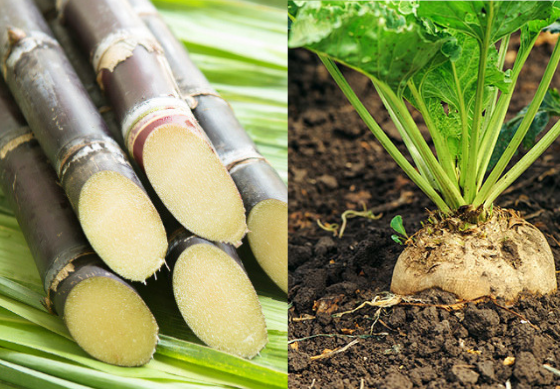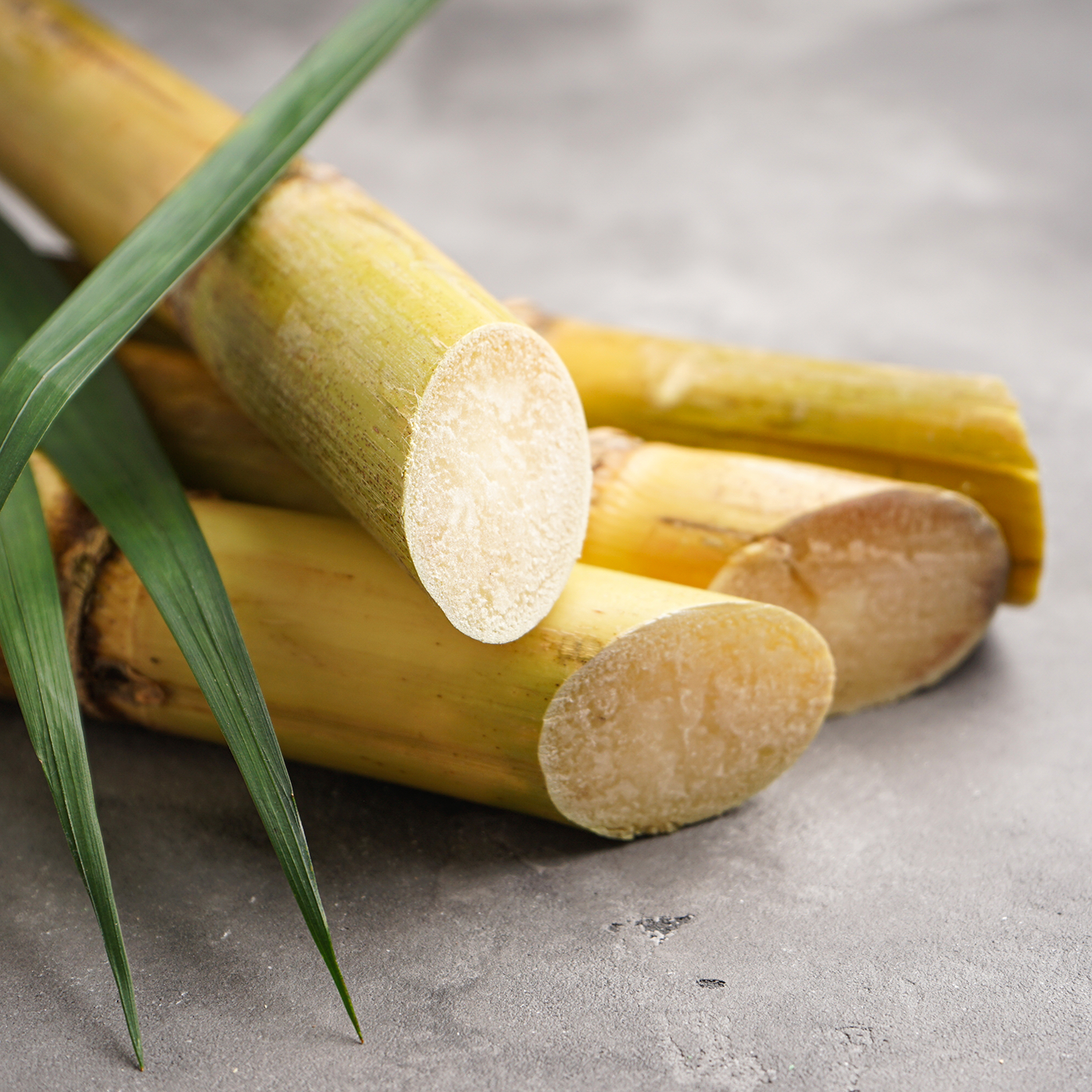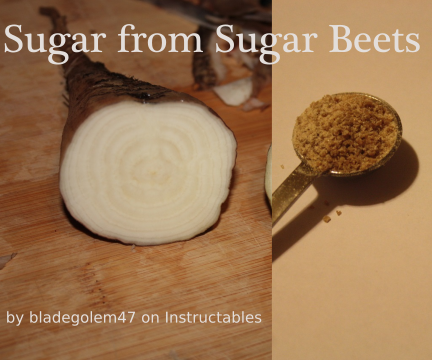Sugar beet vs sugar cane: A global overview of where and why each is grown
The Relevance of Sugar Beet Vs Sugar Cane: a Closer Take A Look At Their Manufacturing Processes and Applications
The importance of sugar beet and sugar cane extends beyond their function as sources of sucrose. Each plant includes distinct manufacturing processes that affect their applications throughout numerous markets. While sugar beet supports not just food manufacturing but likewise biofuels and plant foods, sugar cane mostly serves the food field with important by-products. Recognizing these differences discloses exactly how each crop shapes farming economic climates and sector practices globally, prompting additional exploration into their one-of-a-kind contributions.

Introduction of Sugar Beet and Sugar Cane
Sugar beet and sugar cane are two primary sources of sucrose, each with unique features and farming approaches. Sugar beet, an origin veggie, prospers in temperate environments - Sugar beet vs sugar cane. It is cultivated primarily in the Northern Hemisphere and requires well-drained soil. The plant generally grows to a height of about 18 inches, with a white, fleshy origin having concerning 15-20% sucrose. On the other hand, sugar cane is a tropical grass that prospers in cozy, moist conditions. It can get to elevations of as much as 12 feet and contains high, jointed stems that shop sucrose concentrations ranging from 10-15%. The cultivation of sugar cane is labor-intensive and frequently entails hands-on harvesting. Both plants act as necessary agricultural products, providing raw materials for sugar manufacturing and different spin-offs. Their cultivation practices significantly impact regional economic climates and global sugar markets, making them important to the agricultural landscape
Collecting Methods for Sugar Beet and Sugar Cane
Harvesting strategies for sugar beet and sugar cane vary markedly due to the unique characteristics of each crop. Sugar beet gathering usually utilizes specialized equipment known as beet harvesters, which effectively root out the beets from the soil while lessening damage. These makers use a series of blades to cut the tops and raise the roots, making sure that the beets stay undamaged for processing.In comparison, sugar cane harvesting typically entails two primary methods: hands-on cutting and mechanical harvesting. Manual harvesting, still widespread in some areas, calls for employees to reduce the cane stalks by hand using machetes. This method enables discerning harvesting yet is labor-intensive. Mechanical harvesters have acquired popularity, using revolving blades to reduce and gather the stalks promptly. Both approaches intend to optimize return and quality, with mechanical harvesting significantly taken on to satisfy increasing production demands successfully.
Handling Approaches for Sugar Beet
After being collected, sugar beets undertake a collection of processing actions to draw out sucrose effectively. The very first step involves cleaning the beetroots to remove soil and impurities. Next off, the beetroots are cut right into thin strips called cossettes, which increases the surface for extraction. These cossettes are after that based on warm water extraction in a diffusion process, allowing sucrose to dissolve right into the water.Following extraction, the juice has contaminations and is made clear using lime and heat to speed up solids. The made clear juice is after that concentrated through dissipation, eliminating excess water and enhancing sugar focus. To take shape the sucrose, the focused juice undergoes further dissipation and air conditioning, developing sugar crystals. These crystals are divided from the staying syrup through centrifugation, dried out, and packaged for circulation. This approach guarantees a high return of sucrose while preserving the quality of the end product.
Processing Approaches for Sugar Cane
Processing sugar cane involves a collection of actions developed to extract sucrose effectively. The procedure begins with harvesting, where mature sugar cane is reduced and delivered to processing facilities. As soon as at the mill, the cane undergoes cleaning to eliminate contaminations. The following step is squashing, where mechanical rollers extract juice from the fibrous stalks.This juice is then cleared up using warmth and lime to remove put on hold solids and impurities. Adhering to clarification, the juice is evaporated to focus the sugar web content, resulting in a thick syrup. The syrup undergoes condensation, where sugar crystals form as the syrup cools down. These crystals are divided from the staying molasses via centrifugation.Finally, the sugar is dried and packaged for distribution. This comprehensive handling method assurances that sugar cane generates a top notch item, suitable for various cooking and industrial applications, while taking full advantage of the extraction of sucrose from the raw find out material.
Nutritional Differences Between Sugar Beet and Sugar Cane
The contrast between sugar beet and sugar cane extends past their handling techniques to incorporate significant nutritional differences. Sugar beet has not only sucrose but also a series of nutrients, including vitamin C, potassium, and magnesium. These nutrients add to its possible wellness advantages, such as supporting immune function and maintaining electrolyte equilibrium. In comparison, sugar cane generally provides sucrose with minimal levels of essential nutrients.Additionally, sugar beet has a higher fiber content, which can help in food digestion and promote satiety. The presence of antioxidants in sugar beet may also offer protective effects against oxidative anxiety, an aspect connected to different chronic illness. While both sources are mainly used for sugar production, the nutritional accounts recommend that sugar beet may provide additional health advantages contrasted to sugar cane. This difference is vital for customers seeking greater than just sweeteners in their diet regimens.
Applications of Sugar Beet in Numerous Industries
A range of markets take advantage of sugar beet for its versatile applications beyond sugar production. In the food sector, sugar beet acts as a vital active ingredient in creating different refined foods, dig this including sugary foods and baked items, as a result of its all-natural sweetness. Additionally, the pulp originated from sugar beet is used as animal feed, offering a nutrient-rich source for livestock.In the biofuel industry, sugar beet is progressively recognized for its possibility in creating bioethanol, contributing to renewable resource services. The farming field take advantage of sugar beet's byproducts, which can be used as natural fertilizers, enriching dirt health and fertility.Furthermore, sugar beet removes are used in drugs and cosmetics, where they work as natural sugar and humectants. These diverse applications highlight sugar beet's function as a useful resource in improving sustainability and innovation throughout multiple sectors, reinforcing its significance in contemporary production practices.
Applications of Sugar Cane in Various Industries

Frequently Asked Concerns
What Ecological Influences Are Connected With Sugar Beet and Sugar Cane Production?
The environmental effects of sugar beet and sugar cane manufacturing consist of dirt destruction, water use, chemical application, and environment disturbance. These factors add to ecological discrepancies, increasing worries regarding sustainability in farming techniques connected with both crops.

Exactly How Do Sugar Beet and Sugar Cane Contrast in Regards To Economic Practicality?
The economic feasibility of sugar beet and sugar cane differs based upon factors like geographic location, production expenses, and market demand - Sugar beet vs sugar cane. Both plants offer distinct benefits, affecting farmers' choices concerning growing and investment in different areas
What Are the Key Regions for Sugar Beet and Sugar Cane Farming?

Just How Does Climate Impact the Development of Sugar Beet and Sugar Cane?
Environment considerably influences the development of sugar beet and sugar cane. Sugar beetroots grow in cooler temperatures, while sugar cane requires warm, tropical conditions. Sugar beet vs sugar cane. Both my response crops depend on ample rains and sunshine for perfect advancement and yield
Exist Any Type Of Substantial Wellness Concerns Associated With Consuming Sugar From These Sources?
Wellness problems pertaining to sugar consumption include obesity, diabetes, and heart disease. Both sugar beet and sugar cane-derived sugars can contribute to these concerns, specifically when eaten in excessive quantities, despite their resource.